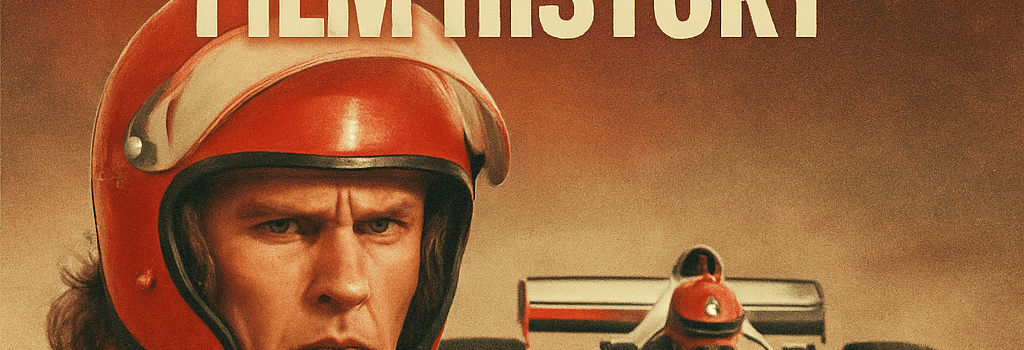F1: The Movie’s Place in Racing Film History

Formula 1 has never looked—or sounded—this visceral on the big screen. Backed by Apple Studios and helmed by Top Gun: Maverick director Joseph Kosinski, F1: The Movie blends high-octane spectacle with a time-tested underdog narrative. But does it capture the precision, technology, and raw drama that define Grand Prix racing?
1. Plot and Production Overview
The story follows Sonny Hayes (Brad Pitt), a former F1 rookie whose career was derailed by a catastrophic crash three decades earlier. Racing at the Rolex 24 at Daytona to exorcise old demons, Hayes receives a midseason call to revive the floundering APXGP team. Reuniting with teammate Joshua Pearce (Damson Idris), he faces not only his personal limits but the cutthroat dynamics of sharing an F1 cockpit.
Apple’s all-access partnership with Formula 1 granted the filmmakers permission to shoot on the official F1 grid throughout the 2023 and 2024 seasons, including behind-the-scenes at the Abu Dhabi, Miami, and Las Vegas Grands Prix. Lewis Hamilton’s role as executive producer opened garage doors normally closed to Hollywood crews.
2. Technical Innovations in Filming
- Miniaturized High-Resolution Cameras: The production deployed RED Komodo 6K and Sony Venice 8K cameras with custom carbon-fiber housings attached to real F1 cars. These rigs supported up to 240 fps slow-motion capture at 4:3 aspect ratios, revealing tire deformation, brake disc thermal glow (up to 900 °C), and fluid dynamics in unprecedented detail.
- Wireless Telemetry Integration: By tapping live sensor data—suspension travel, lateral G-forces, drivetrain torque—the cinematography team created AR overlays in post, illustrating exactly how an F-duct or DRS deployment alters aero balance at 200 mph.
- Edge Computing & AI Stabilization: On-set edge servers running NVIDIA Jetson AGX Orin units processed raw footage in real time, applying AI-driven frame stabilization and lens distortion correction. The result: crystal-clear onboard shots without the weight and bulk of traditional stabilization rigs.
3. Authenticity vs. Dramatic License
The film shines when it dives into real F1 operations: a high-fidelity wind-tunnel test at Williams’ Milton Keynes facility; McLaren’s 70-meter Machining and Tooling Centre; and a genuine FIA scrutineering bay. Yet screenwriters took liberties with race-weekend rituals. Seat fitments wrap up in minutes, engineers condense a multi-phase aero development program into a single test, and improbable back-marker comebacks stack up faster than the actual budget-cap allows.
“We wanted the heart of F1 to beat through every frame,” says cinematographer Claudio Miranda. “But a 23-turn circuit and 65 laps just wouldn’t fit into two hours.”
4. Revisiting the Classics: From Grand Prix to Le Mans
Hollywood’s love affair with circuit racing dates back over half a century. John Frankenheimer’s Grand Prix (1966) introduced split-screen telecine and on-board cameras weighing 40 kg. Steve McQueen’s Le Mans (1971) captured the raw endurance of the 24 Hours—recording natural engine noise with no ADR or foley overdubs in the first 45 minutes.
F1: The Movie doesn’t reinvent the wheel but refines decades of innovation: 8K digital intermediates replace celluloid grain, AI assists color timing, and drone-mounted LiDAR scans deliver photorealistic track textures. In technical ambition, it rivals—and in some respects exceeds—its forebears.
5. Audience Impact and Future Directions
- The Drive to Survive Effect: Since Netflix’s hit documentary skyrocketed global viewership by over 25%, F1’s social media following has surged past 30 million. Recent demographic studies show a 40% increase in female fans under 35.
- Cross-Platform Engagement: Sky, ESPN, and F1TV Pro reported a 15% uptick in race-day streaming concurrent with the film’s release. Interactive WebAR experiences let users visualize car setups and compare lap telemetry.
- Tech for Tomorrow: Industry insiders suggest the next frontier lies in ultra-wide VR live feeds, 5G-sliced networks for multi-angle at-home viewing, and machine-learning-driven race predictions integrated into broadcasts.
6. The Verdict: A Podium Finish
While F1: The Movie follows familiar sports-drama beats, its technical authenticity and cutting-edge cinematography secure it a bronze medal among racing films. It surpasses Rush and Ford v Ferrari by eschewing cartoonish stunts, and edges ahead of Days of Thunder through modern camera systems and live telemetry.
Yet it can’t dethrone Le Mans—a film whose almost documentary approach and on-board 917K shots remain benchmarks. For aficionados, F1: The Movie is a thrilling lap through contemporary race technology; for casual viewers, a fast-paced drama with enough authenticity to ignite a new passion for the sport.